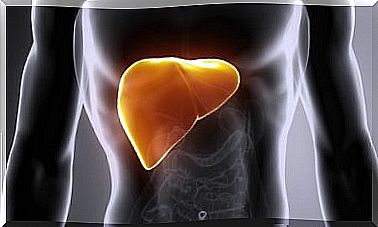Suffering: What Happens In Our Brain When We Feel It?
Tree roots are said to grow longer during storms. That is, in a way, the consequences of suffering also include overcoming and learning.
Let’s take a look at how the brain responds on the battlefield and when it comes to such results.
Suffering: how does the brain live it?
Talking about this emotion inevitably leads us to point out the stress response implicit in it.
Therefore, as part of this psychophysiological reaction, suffering will be characterized by certain correlates at the neuroendocrine, emotional and behavioral level.
1. Neuroendocrine changes
On the one hand, there are effects on both the structure and the “chemistry” of the brain. For example, a systematic review by Professor Laura LM Cassiers and her team reaffirms the evidence regarding the neurological alterations that those who have suffered traumatic events (such as abuse, sexual abuse or neglect) in childhood.
Specifically, these findings indicate that the amygdala (a brain structure that participates in fear processing) reacts to a greater extent when these people remember such painful events. In addition, the volume of the frontal cortex also becomes reduced after prolonged exposure to these events.
Likewise, studies such as that of a group of researchers from the University of Oregon refer to variations in the balance of some neurotransmitters, especially cortisol (a hormone released by stress).
In this sense, these authors find that this state of continued alertness is related to greater awareness during development. That is, with a more pronounced activation when new episodes of anxiety occur, which is manifested in higher basal cortisol concentrations.
2. Emotional expression of pain
As we can see, living pain constantly generates various problems in the brain, which, in turn, affects emotional health with which we face the following challenges.
According to this, persistent suffering is presented as a burden to address the challenges that are to come and, even, as a limitation to enjoy what is positive around us.
Therefore, if in any way, we can free ourselves, let’s do it. If someone hurts us, let us react. If some concern oppresses us, let’s analyze what alternatives exist to handle it.
In addition, throughout this process expressing the emotions we feel will serve as a valve to “let go” and give them space for a time. So, pour off your tears, scream if you need it.
Let’s weigh the option of exploring what are the possibilities within our reach or asking for help, but not the option of continuing to accumulate suffering as if it were a perpetual and immutable condition.
3. Suffering as an opportunity for learning
Taking into account that one ‘s own competence to face problems becomes compromised in these types of situations, certain strategies are identified that may be more useful to us in dealing with discomfort.
Along these lines, a work by Lindsay D. Evans, MS et al., Doctor of psychology warns of the risks of avoidance behaviors when facing situations that are adverse to us. For this reason, the role of a more active behavior is highlighted in dealing with the anguish that characterizes the experience of circumstances that are sometimes so unfavorable.
Suffering is a great teacher, perhaps the most ruthless, but the formula to manage it is precisely by acting. By preventing it from installing itself as a hostile host that destroys us.
So, along with the attention we give to our emotions, we value the important opportunity to take care of ourselves that we have before us. Perhaps, at first, insecurity invades us. But searching, even a hint of inspiration, we are likely to detect certain gaps that we can still fill.
So, we will see what pieces are missing, how to solve that threat that seemed impossible. At that moment, we will have taken a great step, a magnificent advance on our path. Without a doubt, we will have learned and that experience will be another success in which to continue supporting us in the future.
And what do we take away from all this?
With these reflections we have reviewed certain questions that are raised as fundamental in the tests to which the “feared” suffering subjects us.
So let’s leave enough room to channel our emotions and think about the resources with which it is feasible for us to deal with pain.
Let us remember that the ability to handle adversity is present in all of us and that, once we get down to “work”, we have already overcome the most difficult section of the journey.








